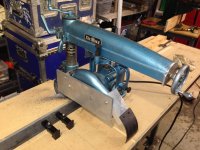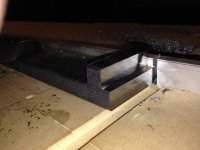downsizingnow48
Elite Member
Thanks for the note. I think bridge saws would be a good bet for this. I looked at them before settling on the old RAS. Many use a high speed (5000rpm) motor. I did find a bridge saw sold by Harbor Freight and Northern Tool that is under $300 and uses a 3500rpm motor and looked at that a couple times. It has good reviews. Would have had to use table extensions on both sides. The RAS with long table came up on Craigslist while I was still trying to decide so got that instead of a bridge saw.


